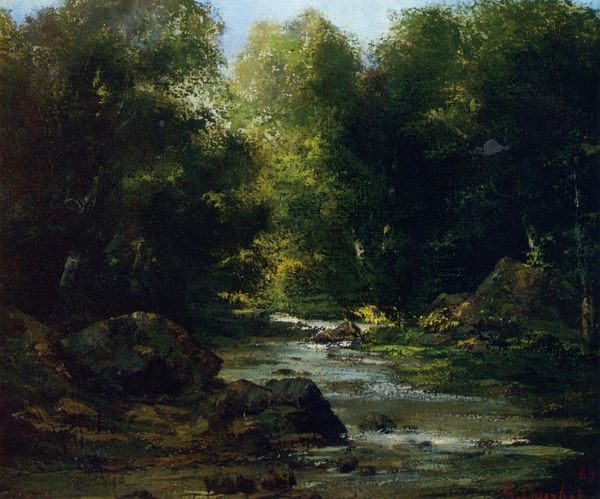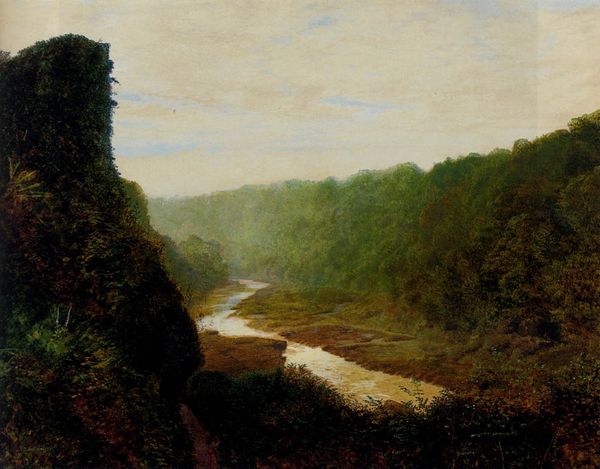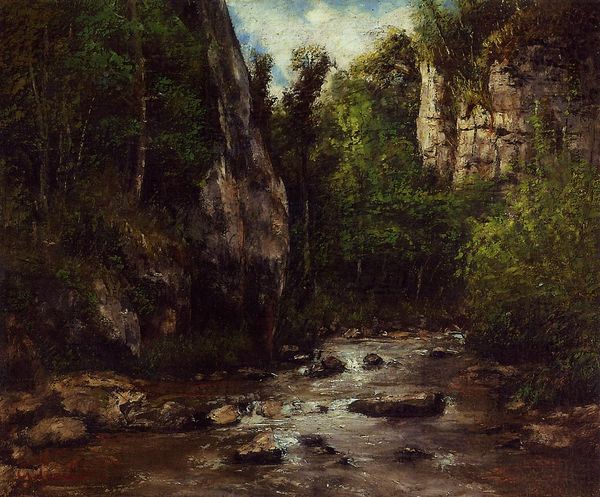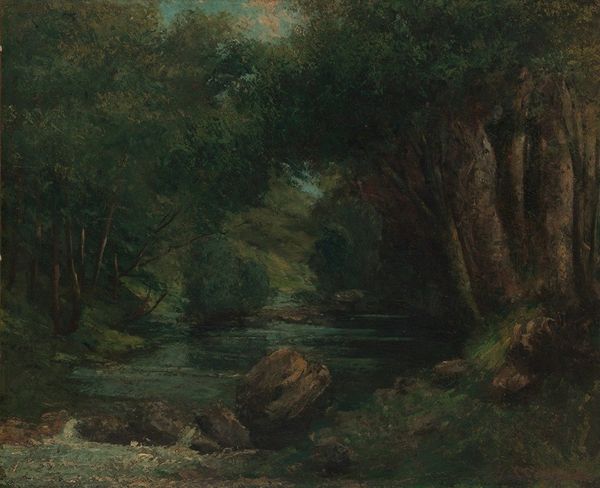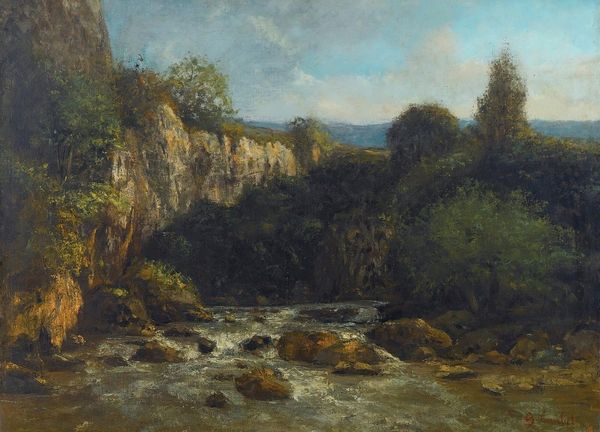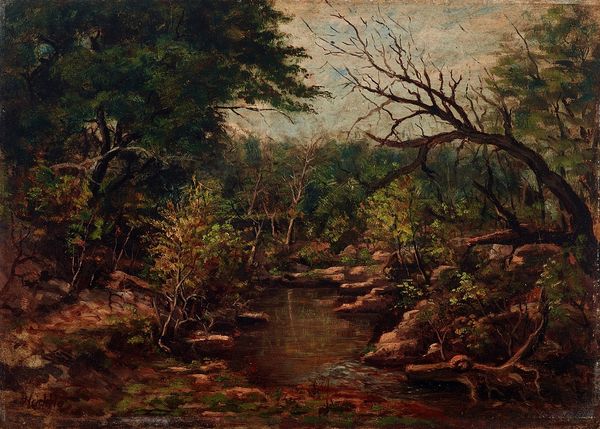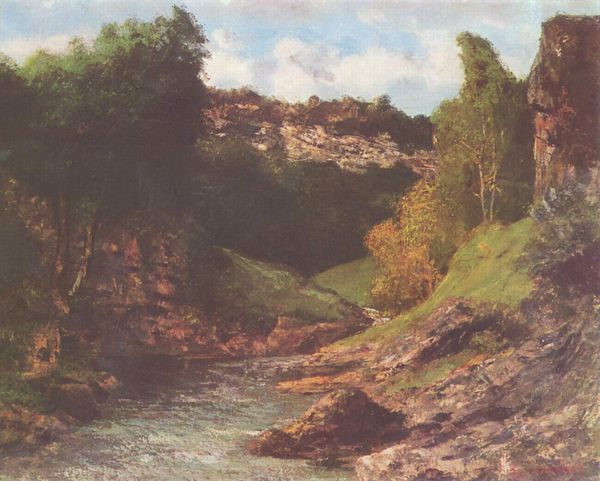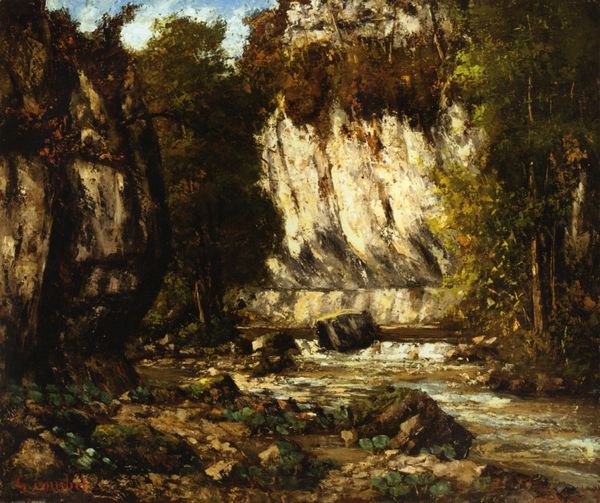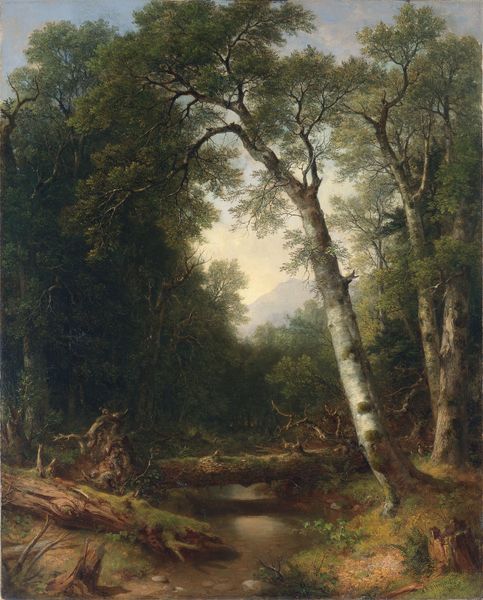
Copyright: Public domain
Gustave Courbet painted "The River Plaisir Fontaine" with oil on canvas using brushes, palette knives, and rags. Courbet's technique in this landscape is particularly interesting. Thick paint application creates texture, mimicking the rough surfaces of the rocks and foliage. He captures the density of the forest with greens, browns, and grays, applied in layers to convey depth and shadow. Courbet’s materiality speaks to a shift in art history towards realism. He favored direct observation and a focus on the physical world. Courbet challenged the academic standards of his time, turning away from historical or idealized subjects to portray everyday scenes and landscapes. His choice to represent the forest as it is, wild and untamed, carries a social message. It speaks to a democratic view of nature, accessible to all, and to the value of the natural world, untouched by industrial progress. The painting’s significance lies not just in its visual representation but in Courbet’s revolutionary approach to his materials and subject matter, marking a pivotal moment in the move toward modern art.
Comments
No comments
Be the first to comment and join the conversation on the ultimate creative platform.
